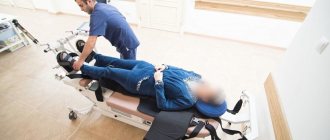Broca's area is the area of the brain responsible for the formation and reproduction of oral speech. Numerous parts of the brain are involved in the processes of understanding and pronouncing words. Damage to the designated brain structures leads to impaired perception of other people's phrases, the inability to pronounce words and logical, complete verbal expressions. The prognosis for speech disorders depends on the location and size of the pathological focus.
Location of cortical speech centers
The described functional structures are located in the telencephalon: in the cerebral cortex.
They are connected to each other by an arcuate fascicle - a collection of myelin fibers, axons of neurocytes of these zones. Wernicke's sensory center is located in the projection of the superior temporal gyrus. It is no coincidence that its location is close to the final point of the auditory analyzer. They are very closely interconnected in the formation of speech skills, perception of words, sentences, as well as writing. Wernicke's area does not occupy the entire gyrus, but only its posterior third.
The area where sounds and words are formed is Broca's center, a limited area of the frontal lobe of the cerebral hemispheres. Broca's center is located in the inferior frontal gyrus. Neurosurgeons insist that the exact location is its posterior third.
Functions
Brain centers within the speech system are functionally connected and interact with such departments as areas of the associative cortex, areas of motor and articulatory activity, and subcortical structures. Participation of numerous brain regions in the speech system is associated with a large number of variants of the course of aphasia (for example, cortical, subcortical, dynamic, motor, acoustic-mnestic, optical-mnestic forms).
On the other hand, the presence of a large number of structural components of the speech system contributes to the restoration of speech function according to a compensatory type in cases where a certain area of the brain is damaged. Expanding the ability to restore functions is associated with the theory of neuroplasticity - the ability of normal nerve cells to take on the tasks of damaged ones.
Broca's area is responsible for the reproduction of verbal stimuli, Wernicke's area is responsible for the perception of verbal stimuli, both areas are located in the left hemisphere. The structures of the auditory cortex located in the left hemisphere take part in the perception of audible verbal signs. Neurons in this region perceive and identify phonemes—the simple sounds that make up words.
Phonemic hearing (the ability to distinguish phonemes) is impaired when designated areas of the cortical layer are damaged. The speech apparatus contains departments - regulating and performing. The regulatory department lies in the left hemisphere of the brain, which, to a greater extent than the right, is responsible for speech production and hearing. The regulatory apparatus includes pathways and nuclei of the brain stem (mainly located in the medulla oblongata).
Nerve endings belonging to the regulatory part of the brain extend in the direction of the muscles responsible for articulatory skills (tongue, lips, cheeks). Nerve endings as part of the regulatory department extend towards the muscles of the respiratory system and the vocal apparatus. Some areas of the cortical layer play a decisive role in the formation of verbal stimuli:
- Frontal gyri. The motor speech center is located in this area of the brain. Thanks to the activity of the designated structures, a person pronounces words and phrases.
- Temporal gyri. They perceive auditory stimuli - someone else's speech.
- Parietal lobe of the cortex. Participates in the process of understanding other people's words.
- Occipital lobe. Participates in the perception and identification of visual stimuli and, accordingly, written text.
- Subcortical nuclei. They regulate the rhythm, tempo, and expressiveness of reproduced words and phrases.
The pathways connect the cortical areas of the brain with the organs of the articulatory and vocal apparatus, which allows you to control muscle contractions and create the desired sounds using the tongue, lips, and cheeks. The pathways of the speech system originate in Broca's area.
Functions of Wernicke's and Broca's centers
The functional significance of the speech center for reading and perceiving spoken speech is quite great. Information that comes from outside in the form of words and sentences is ultimately processed in the auditory analyzer.
This information then reaches Wernicke's auditory-speech area through associative connections. From the entire range of sound signals, this part of the hemispheres isolates letters, which allows you to understand what you hear.
It is also where the content and idea of what a person is trying to say is formed. This is the process of initiating speech.
The functional significance of Broca's speech center lies in ensuring speech motor skills. The idea is formed at the stage of Wernicke's zone. Information along the arcuate fasciculus reaches Broca's speech-motor center, from where impulses are sent to the articulatory speech apparatus.
Causes of speech impairment in children
In order for a child to fully develop, it is necessary to sufficiently develop his speech apparatus and avoid factors that negatively affect this. These include:
- genetic predisposition - the mechanism is not really explained anywhere, but it is almost impossible to avoid this on your own, you can only rely on nature;
- problems with the organs of hearing - if a person hears speech unintelligibly, it will also be reproduced by him;
- inhibition in mental development;
- physical deviations in the perception of the world due to pathologies of the corresponding brain centers;
- the effect of certain medications or the combined use of several medications at the same time;
- insufficient attention from parents and untimely access to specialists.
Everything in the body has its own time, and if the child does not start speaking in time, there is a high probability that he will never be able to do this even with the help of modern medicine, since time has been lost. An example of this is Mowgli children: if a child’s puberty occurred in the wild, no one and nothing can socialize such a child.
The sequence of maturation of speech centers in a child
The human body has been evolutionarily formed in such a way that all processes and structures function only when it is appropriate. Not all axons are covered with myelin after the baby is born. Only those fibers that directly support vital processes are myelinated.
Over time, there are more active areas of the brain. The frontal gyri, for example, are fully functional from the age of six months.
The cortical speech centers are launched at different times, there is a small interval. Wernicke's sensory-speech area becomes functional after 12 months. Only in another six months can we talk about the complete completion of the “launch” of speech centers, when Broca’s center starts working.
Background
In medical practice, the first experiments to identify the areas of the brain responsible for speech were made at the beginning of the 19th century. In the mid-1860s, French anthropologist and surgeon Paul Brocq published the results of his research, which stated that the area of the cortex responsible for speech is located in the posterior lower region of the left hemisphere. This applies to lefties.
The result was obtained thanks to the doctor's observation. He noticed that people who had suffered a right hemisphere stroke did not have speech defects or disorders. In those whose left hemisphere was damaged due to a stroke, such anomalies were detected, and quite pronounced.
This area of the brain is called Broca's area. Let's look at this area in detail: its location and purpose according to a French specialist, and then we will resort to the results of scientists from New York Medical University, whose experiments confirm the lack of knowledge of the organ and actually put an end to more than a century and a half of medicine and science’s understanding of the speech center in the head brain.
Modern hypotheses of Wernicke's and Broca's aphasia
Organic damage to the brain substance (as a result of injury, stroke or intoxication) in the projection of any of the speech centers will lead to a disorder in its perception and reproduction. At the same time, the ability to express one’s thoughts using familiar sounds, words and sentences is lost. This condition is called aphasia.
There are many types of speech impairment. Broca's and Wernicke's areas are most often affected. The foci of pathology are named after aphasia.
Wernicke's aphasia
Wernicke's aphasia is also called motor aphasia. There are several variants of speech impairment in this disorder, but one thing is typical for all: the patient’s understanding of the spoken words is preserved, and patients are not aware of their mistakes and deviations in conversation.
The motor speech center is affected in the event of ischemia, hemorrhage, or another causative factor that leads to obstruction of blood flow through the left middle cerebral artery. With stenosis (narrowing) or atherosclerosis of small branches extending to the cerebral cortex, a mild version of the lesion is possible. Neurologists call it Broca's syndrome minor.
Patients, unlike healthy people, do not speak as fluently. It's harder for them to switch. Starting a conversation is difficult for people with this type of aphasia. Articulatory movements suffer, as paresis (mild form of paralysis) of the facial and facial muscles usually forms in parallel. Words become less intelligible, the sound is quiet (hypophonic speech).
There are no impairments in writing: patients compose sentences correctly and write words without errors (in accordance with their level of education). Otherwise, this type of pathology is called aphemia.
More serious disorders occur with efferent motor aphasia. The localization of the lesion in the brain is the same, but it is smaller in area, depth and extent. All of the above characteristics of spoken language disorders are present.
Added to these are uncolored intonation and incorrect composition of sentences (agrammatism). The conversation is presented in short phrases, usually devoid of verbs (telegraphism). Written language suffers. The patient learns that there are some changes in the conversation from relatives, because he himself is not aware of it.
Broca's aphasia
Clinically, this type is associated with difficulties in the process of perception. The patient is not deaf; he hears sounds. But among their diversity, letters and phonemes cannot be distinguished. Therefore, with sensory aphasia, understanding of spoken words is lost.
In most cases it is impossible to speak correctly. Unconsciously and uncontrollably, the patient replaces some phonemes with consonant ones, making the spoken sentences look like nonsense, “verbal hash.”
Articulation does not change, the voice is sonorous, because the motor center of speech is not affected. The conversation itself maintains a slow and smooth pace. No pauses are heard. When writing, literal paraphasias (replacement of letters and sounds with similar ones) are also possible.
Information about language areas is important for understanding how basic language and writing skills are related and based on. This is important not only for doctors to diagnose aphasia, but also for the average person to help understand the situation.
Different opinion
The development of neuroimaging allows us to make the assumption that the functions that scientists previously thought were performed by Wernicke’s lobes are carried out by the temporal lobes. There are theories that claim that the inferior and middle temporal gyri process speech information. Also, a small portion of the temporal gyrus functions in speech recognition and processing. But these are just assumptions. Let's move on to the research results.
Several years ago, New York University and its medical center questioned the achievements of Brock and Wernicke, who observed people who had suffered a stroke. Scientists studied the activity of organs in completely healthy patients using modern instruments - a magnetic resonance imaging scanner, the work of which is based on observations of blood circulation during various tasks. The results led to the conclusion that the anatomy of the speech centers is not at all the same as it was believed for a century and a half.
The electrodes were applied directly to the surface of the cerebral cortex, which makes it possible to obtain a highly accurate picture with good resolution.
No one drilled into anyone’s skull; everything was done with the consent of the patient, who had to open the skull to treat any neurological abnormalities.
Some of those who agreed to the study had electrodes attached to one of the hemispheres, and some - to both. During observation, they listened to speech, repeated it to themselves and out loud. Moreover, among the words there were not only ones familiar to them, but also invented ones that did not carry meaning. Unknown syllables made it possible to separate the functions of pronouncing speech and understanding the meaning of phrases.
As a result, the centers that were the most active were identified. They are located in both hemispheres almost equally. It was also concluded that the speech department is less complex than the language department. The latter is responsible for understanding, processing information and composing logical phrases, and not just pronouncing words or syllables, like speech. That is why children utter the first inexpressive syllables before they understand the speech of strangers.







